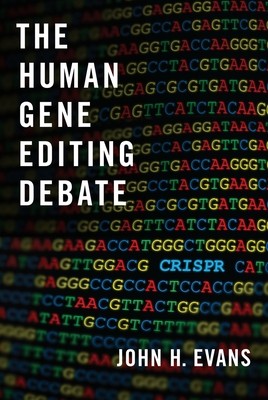
- We will send in 10–14 business days.
- Author: John H Evans
- Publisher: Oxford University Press, USA
- ISBN-10: 0197519563
- ISBN-13: 9780197519561
- Format: 14.5 x 21.1 x 2.3 cm, kieti viršeliai
- Language: English
- SAVE -10% with code: EXTRA
Reviews
Description
In 2018 the first genetically modified babies were reportedly born in China, made possible by the invention of CRISPR technology in 2012. This controversial advancement overturned the pre-existing moral consensus, which had held for over fifty years before: while gene editing an adult person was morally acceptable, modifying babies, and thus subsequent generations, crossed a significant moral line. If this line is passed over, scientists will be left without an agreed-upon ethical limit. What do we do now?
John H. Evans here provides a meta-level guide to how these debates move forward and their significance to society. He explains how the bioethical debate has long been characterized as a slippery slope, with consensually ethical use at the top, nightmarish dystopia at the bottom, and specific agreed-upon limits in between, which draw the lines between the ethical and the unethical. Evans frames his analysis around these limits, or barriers. Historically they have existed to guide scientists and to prevent the debate from slipping down the metaphorical slope into unacceptable eugenicist possibilities, such as in Aldous Huxley's novel Brave New World or the movie Gattaca. Evans examines the history of how barriers were placed, then fell, then replaced by new ones, and discusses how these insights inform where the debate may head. He evaluates other proposed barriers relevant to where we are now, projects that most of the barriers suggested by scientists and bioethicists will not hold,and cautiously identifies a few that could serve as the moral boundary for the next generation. At a critical time in this new era of intervention in the human genome, The Human Gene Editing Debate provides a necessary, comprehensive analysis of the conversation's direction, past, present, and future.
EXTRA 10 % discount with code: EXTRA
The promotion ends in 21d.15:15:44
The discount code is valid when purchasing from 10 €. Discounts do not stack.
- Author: John H Evans
- Publisher: Oxford University Press, USA
- ISBN-10: 0197519563
- ISBN-13: 9780197519561
- Format: 14.5 x 21.1 x 2.3 cm, kieti viršeliai
- Language: English English
In 2018 the first genetically modified babies were reportedly born in China, made possible by the invention of CRISPR technology in 2012. This controversial advancement overturned the pre-existing moral consensus, which had held for over fifty years before: while gene editing an adult person was morally acceptable, modifying babies, and thus subsequent generations, crossed a significant moral line. If this line is passed over, scientists will be left without an agreed-upon ethical limit. What do we do now?
John H. Evans here provides a meta-level guide to how these debates move forward and their significance to society. He explains how the bioethical debate has long been characterized as a slippery slope, with consensually ethical use at the top, nightmarish dystopia at the bottom, and specific agreed-upon limits in between, which draw the lines between the ethical and the unethical. Evans frames his analysis around these limits, or barriers. Historically they have existed to guide scientists and to prevent the debate from slipping down the metaphorical slope into unacceptable eugenicist possibilities, such as in Aldous Huxley's novel Brave New World or the movie Gattaca. Evans examines the history of how barriers were placed, then fell, then replaced by new ones, and discusses how these insights inform where the debate may head. He evaluates other proposed barriers relevant to where we are now, projects that most of the barriers suggested by scientists and bioethicists will not hold,and cautiously identifies a few that could serve as the moral boundary for the next generation. At a critical time in this new era of intervention in the human genome, The Human Gene Editing Debate provides a necessary, comprehensive analysis of the conversation's direction, past, present, and future.


Reviews